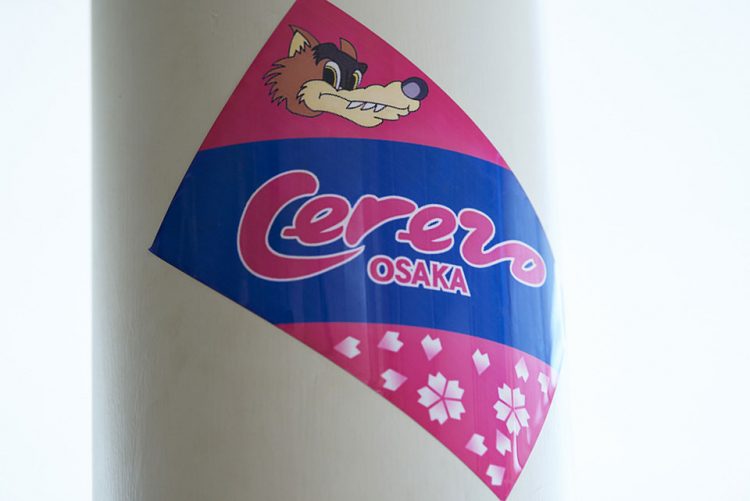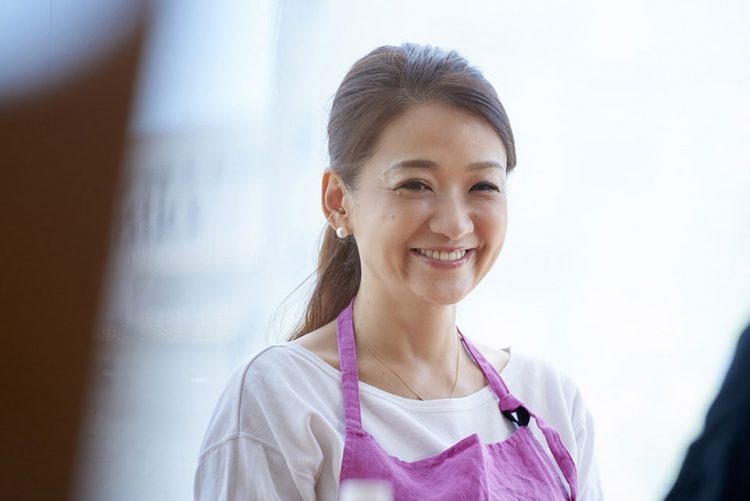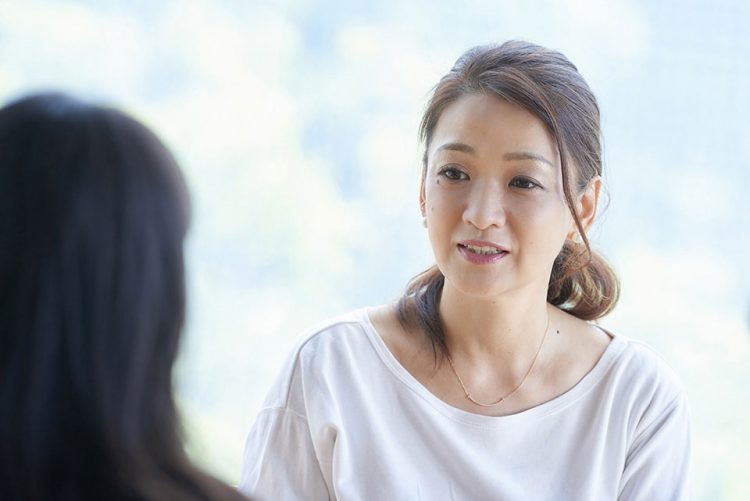Murano Akiko on Nutrition’s Role in Athletic Success
Sep 05,2019
Murano Akiko on Nutrition’s Role in Athletic Success
Sep 05,2019


After working at the Hokkaido Consadole Sapporo soccer club’s dormitory and then at Mikitani House, Vissel Kobe’s youth development center, Murano Akiko now oversees the dietary lives of athletes as dorm mother of the Cerezo Osaka soccer club. As an experienced dietitian, she provides nutritional advice to soccer players and other professional athletes, gives lectures for students and homemakers, and authors recipe books. Before becoming a dorm mother, however, she was, in her own words, just an ordinary homemaker.
So how did Murano end up becoming a dorm mother? In this article, we find out the answer to that question, as well as what she pays attention to when preparing meals for athletes and what prospects she sees for the future since becoming a dorm mother.
Murano married at 24 and raised two children as a stay-at-home mother. She didn’t start her career — preparing meals for Hokkaido Consadole Sapporo’s players — until she was 35, and only then because she was asked by her husband, the club’s administrative manager. The opportunity was like a bolt out of the blue for her.
“I was living in Tokyo with our kids at the time, and my husband was living on his own in Sapporo. He pitched the idea to me saying, ‘The players eat out all the time and it’s slowing them down physically.’ But for me, I had only cooked meals for our family and hadn’t the foggiest idea of what athletes eat.
My husband told me — ‘You have two days to decide if you are going to come [to Sapporo]’, so I said: ‘I’ll be there.’ [laughs] If I’d had more time to consider it, I’d probably have said no. I’d have thought about it too much and my hesitation would have gotten the better of me. My husband knows my tendencies, so that’s why he gave me that quick ultimatum. [laughs]”

This is how Murano began preparing meals for Hokkaido Consadole Sapporo, but it did not go smoothly at the start.
“In the early going, lots of things went wrong, such as players not finishing the meals I served them. During that first year in particular, I often wondered — ‘What did I come all the way to Sapporo to do?’
Nevertheless, as I got better at communicating with the players, they would tell me what meals they wanted to have and recount how their physical conditioning improved. At the same time, I read a lot of books about food and nutrition. From my studies, I realized that I could adapt the meals I made for my family to suit an athlete’s diet by modifying the volume and nutritional balance of the meals.
Eventually, I began to feel my work was useful to at least some of the players. Two years after I went to Sapporo, they completed a dormitory for the players and I was assigned to live with the athletes as the dorm mother. I was delighted because I felt it was proof that I was forging real relationships with the players.”
After working for six years at Hokkaido Consadole Sapporo, Murano went on to work for 10 years as the dorm mother at Mikitani House, Vissel Kobe’s youth development center. And since January 2019, in addition to being the dorm mother for Cerezo Osaka, she has been providing nutritional education support to the elementary school athletes at the club’s associated school.
We asked her what she is most cognizant about, now that she prepares meals for growing kids.
“This applies anywhere, not just to my current workplace, but first and foremost, I think about making sure the food tastes good for them. In a typical dormitory, ready-to-eat meals are placed on racks for the athletes to grab and eat on their own when they return from practice. However, I want them to eat freshly prepared meals. This is why I prepare the meals to the point where I only have to heat them up or season them before they are ready. When the kids come in, I put on the final touches so they can eat hot fresh meals.

Another point is I don’t dish out the food in the kitchen. Instead, I put the frypans on the counter and serve up the meals in front of the kids. I think it’s fun seeing them get excited while watching their own meal being finished right before their eyes.”
Murano, of course, places importance on nutritional balance. This is why she uses fermented foods.
“We keep natto and yogurt in the refrigerator, so players can eat them anytime they want. Another indispensable ingredient is kimchi. Kimchi is priceless because it tastes great as is, stir-fried, or in soups.
When I was in Kobe, I often made amazake [a sweet drink made from fermented rice]. I would serve amazake mixed with soy milk and granola, and it was a hit among the players. Among their other benefits, fermented foods help intestinal regulation. They are so essential, in fact, that I would say you should have at least one fermented ingredient or dish at every meal.
Especially for elementary and junior-high school kids, it is important to eat a good helping of white rice. This is because kids that don’t eat much tire out more easily. So mixing in natto or kimchi is a good way to kill two birds with one stone, since these ingredients get kids to eat more white rice and are very nutritious.”

Murano has devised various means to build up the bodies of the kids in her charge, such as intentionally using sakura shrimp or small fish in meals to ensure a sufficient supply of calcium, which is essential for their growth, and using a combination of animal and vegetable proteins to boost protein absorption rates.
“I recommend soups if you want people to get a lot of nutrients all at once. Especially in the summer, we tend to eat chilled food that makes our stomach and intestines cold. When that happens, we lose our appetite.
Soups, on the other hand, can replenish the salts and water lost through sweat while exercising, and you can use all kinds of ingredients, such as vegetables, meat, and beans. Above all, soup warms the body from the inside out, so I often serve soup in the summer.”
Murano has another simple trick to ensure a meal has a good nutritional balance.
“When I first started out as a dorm mother, I read a book that said for a meal to have a good nutritional balance, it should have five colors of ingredients. According to the book’s thinking, yellow is carbohydrates, red is protein, green is vitamins, white is calcium, and black is iron. The color of an ingredient directly represents its nutritional content.
So, if a meal doesn’t have enough white, add some yogurt, or if it is missing black, put some wakame seaweed in miso soup, and so on. I recommend this approach because it’s simple and easy to understand.”
It has been 16 full years since Murano began working as a dorm mother. Given her experience, what does she feel is the most rewarding part of her job?
“Over my 16 years, I’ve had a series of experiences that initially looked daunting but turned out to be interesting. Even how I got started in the first place — an ordinary homemaker with no experience to just dive in and make meals for professional soccer players — was rather crazy.
But despite my inexperience, I was allowed to do it and I gained confidence when I saw up close the players’ bodies change for the better. For me, it was proof that our bodies are formed by what we eat. Conversely, if you cut corners on your diet, it will show up in your physique. That’s why I always feel my role as a dorm mother is an important one in the development of athletes.”

Thinking that Murano would decide the meal menus for a week or so in advance, much like school lunches, we were surprised to learn that she simply opens the refrigerator door and decides on the spot what to make for that day. Murano, who works hard like this every day as the dorm mother for Cerezo Osaka, also has dreams for the future.
“My No. 1 dream is to see the kids eating at the dorm now in three years’ time. I’m sure their bodies will change as they continue to eat over the three years. So, to start off with, I want to keep doing my best at this dorm and in this environment for the next three years.
After that, I’d like to support many different clubs and dormitories. If there are dormitories having problems with their meals, I would like to work with them to find solutions or send in a dorm mother to help them.
There are more young women recently wanting to become dorm mothers, so I would like to get involved in training as well. And through all these activities, I hope I can help improve the circumstances of all people, not just athletes, living in dormitories.”

Murano is a sports meal-preparation expert who began working as a dorm mother for Hokkaido Consadole Sapporo in 2003, after which she moved to Vissel Kobe in 2009 and then Cerezo Osaka in 2019. She provides support to club players primarily on the meal preparation side. She engages in other activities related to food, such as giving lectures and sharing recipes, and in 2011 she published J-League Dormitory Meals Done with Skill (Media Factory).